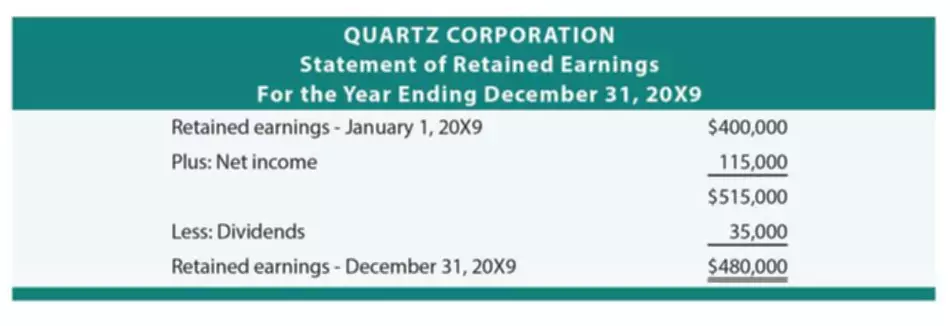Content
At the end of the accounting year the balances will be transferred to the owner’s capital account or to a corporation’s retained earnings account. Revenues and gains are recorded in accounts such as Sales, Service Revenues, Interest Revenues (or Interest Income), and Gain on Sale of Assets. These accounts normally have credit balances that are increased with a credit entry.
The Normal Balance of an account is either a debit (left side) or a credit (right side). It’s the column we would expect to see the account balance show up. Debit notes are a form of proof that one business has created a legitimate debit entry in the course of dealing with another business (B2B).
What Is the Difference Between a Debit and a Credit?
On the contrary, when an amount is accounted for on the opposite side of its normal balance, it decreases that amount. Asset, liability, and most owner/stockholder equity accounts are referred to as permanent accounts (or real accounts). Permanent accounts are not closed at the end of the accounting year; their balances are automatically carried forward to the next accounting year. Sometimes, a trader’s margin account has both long and short margin positions. Adjusted debit balance is the amount in a margin account that is owed to the brokerage firm, minus profits on short sales and balances in a special miscellaneous account (SMA).
- This might occur when a purchaser returns materials to a supplier and needs to validate the reimbursed amount.
- Using the Normal Balance in your Chart of Accounts is essential for effective financial management in procurement.
- Understand these critical pieces of notation by exploring the definitions and purposes of debits and credits and how they help form the basics of double-entry accounting.
- Certain accounts are used for valuation purposes and are displayed on the financial statements opposite the normal balances.
- The balance of account set X is alway equal to the sum of all entries posted to accounts in X plus the balances of all account sets in X.
Harold Averkamp (CPA, MBA) has worked as a university accounting instructor, accountant, and consultant for more than 25 years. He is the sole author of all the materials on AccountingCoach.com.
What is a Normal Balance in Accounting?
To better visualize debits and credits in various financial statement line items, T-Accounts are commonly used. Debits are presented on the left-hand side of the T-account, whereas credits are presented on the right. Included below are the main financial statement line items presented as T-accounts, showing their normal balances. This standard discusses fundamental concepts as they relate to recordkeeping for accounting and how transactions are recorded internally within Indiana University.
Each account can be represented visually by splitting the account into left and right sides as shown. This graphic representation of a general ledger account is known as a T-account. A T-account is called a “T-account” because it looks like a “T,” as you can see with the T-account shown here. Normal balance is the accounting classification of an account. When we’re talking about Normal Balances for Expense accounts, we assign a Normal Balance based on the effect on Equity.
Accounts with a normal credit balance
We can use account sets to roll up balances for different groupings of accounts. Many accounting systems model the chart of accounts as a single hierarchical tree, with “parent” accounts and “child” or sub-accounts. This is especially useful to do things like roll up balances across multiple accounts. However, a single structure for every account can be limiting, as some use cases call for multiple independent ways of organizing accounts. Any commercial activity in which a business organization involves the primary motive of earning profits from the proceeds of the activity is known as business activities. The business activities that involve monetary transactions need to be recorded in the accounting books.

Because the allowance is a negative asset, a debit actually decreases the allowance. A contra asset’s debit is the opposite of a normal account’s debit, which increases the asset. A dangling debit is a debit balance with no offsetting credit balance that would allow it to be written off. It occurs in financial accounting and reflects discrepancies in a company’s balance sheet, as well as when a company purchases goodwill or services to create a debit. Within IU’s KFS, debits and credits can sometimes be referred to as “to” and “from” accounts.
Understanding Normal Balance through Accounting Equations
Debits represent money being paid out of a particular account. A business might issue a debit note in response to a received credit note. Mistakes (often interest charges and fees) in a sales, purchase, or loan https://www.bookstime.com/articles/normal-balance invoice might prompt a firm to issue a debit note to help correct the error. You have full control over the chart of accounts and can create new settlement and other accounts to represent your own funds flows.
- The accounts which have the normal debit balance are assets as assets are increased with the debit, expenses, and dividends are the equity accounts that also have a debit balance.
- However, in double-entry accounting, these terms are used differently than you may be used to.
- NetSuite uses positive notation for debit accounts and negative notation for credit accounts.
- In this case, the purchaser issues a debit note reflecting the accounting transaction.
If an account has a Normal Credit Balance, we’d expect that balance to appear in the Credit (right) side of a column. 21 Received $500 on account for services performed on November 9. 9 Performed cleaning services on account in the amount of $4,700. Firstly, the Normal Balance can be used as a reference when creating new accounts or modifying existing ones. When setting up new accounts, ensure that they are assigned the correct Normal Balance based on their purpose and function within your organization. The Normal Balance in the Chart of Accounts is a crucial tool for any procurement team looking to manage their finances effectively.
Accounting Core
Note, for this example, an automatic off-set entry will be posted to cash and IU users are not able to post directly to any of the cash object codes. Because postage was purchased for $12.70, cash, an asset account, will be credited, which will decrease the cash balance by $12.70. Contrarily, purchasing postage is an expense, and therefore will be debited, which will increase the expense balance https://www.bookstime.com/ by $12.70. When the account balances are summed, the debits equal the credits, ensuring that the Academic Support RC has accounted for this transaction correctly. This general ledger example shows a journal entry being made for the collection of an account receivable. When we sum the account balances we find that the debits equal the credits, ensuring that we have accounted for them correctly.

Consider the following transactional data for the first month of operations for Crystal Clear Cleaning. If this account or any of its subaccounts is used in ProContractor, the Use Subaccount field is disabled. Learn more about how Pressbooks supports open publishing practices. Let’s recap which accounts have a Normal Debit Balance and which accounts have a Normal Credit Balance. Then, I’ll give you a couple of ways to remember which is which.
Account Types
Information presented below walks through specific accounting terminology, debit and credit, as well as what are considered normal balances for IU. The accounts which have a normal credit balance are liabilities because the liabilities increase when credited, other than common stock and revenues have the normal credit balance. As we can see from this expanded accounting equation, Assets accounts increase on the debit side and decrease on the credit side. Liabilities increase on the credit side and decrease on the debit side.
However, the difference between the two figures in this case would be a debit balance of $2,000, which is an abnormal balance. This situation could possibly occur with an overpayment to a supplier or an error in recording. By having many revenue accounts and a huge number of expense accounts, a company will be able to report detailed information on revenues and expenses throughout the year. Since cash was paid out, the asset account Cash is credited and another account needs to be debited. Because the rent payment will be used up in the current period (the month of June) it is considered to be an expense, and Rent Expense is debited.
The main difference is that invoices always show a sale, where debit notes and debit receipts reflect adjustments or returns on transactions that have already taken place. 24 Received $2,500 cash for accounting services to be completed next month. 15 Menning contributed his personal automobile to the business in exchange for common stock. Nov. 1 Stockholders contributed $15,000 and a truck, with a market value of $3,000, to the business in exchange for common stock. Debits (abbreviated Dr.) always go on the left side of the T, and credits (abbreviated Cr.) always go on the right.
- 9 Performed cleaning services on account in the amount of $4,700.
- Revenues and gains are recorded in accounts such as Sales, Service Revenues, Interest Revenues (or Interest Income), and Gain on Sale of Assets.
- Normal balance is the accounting classification of an account.
- More about double-entry accounting and an account’s normal balance.
- Learn more about how Pressbooks supports open publishing practices.
- To increase the value of an account with normal balance of credit, one would credit the account.